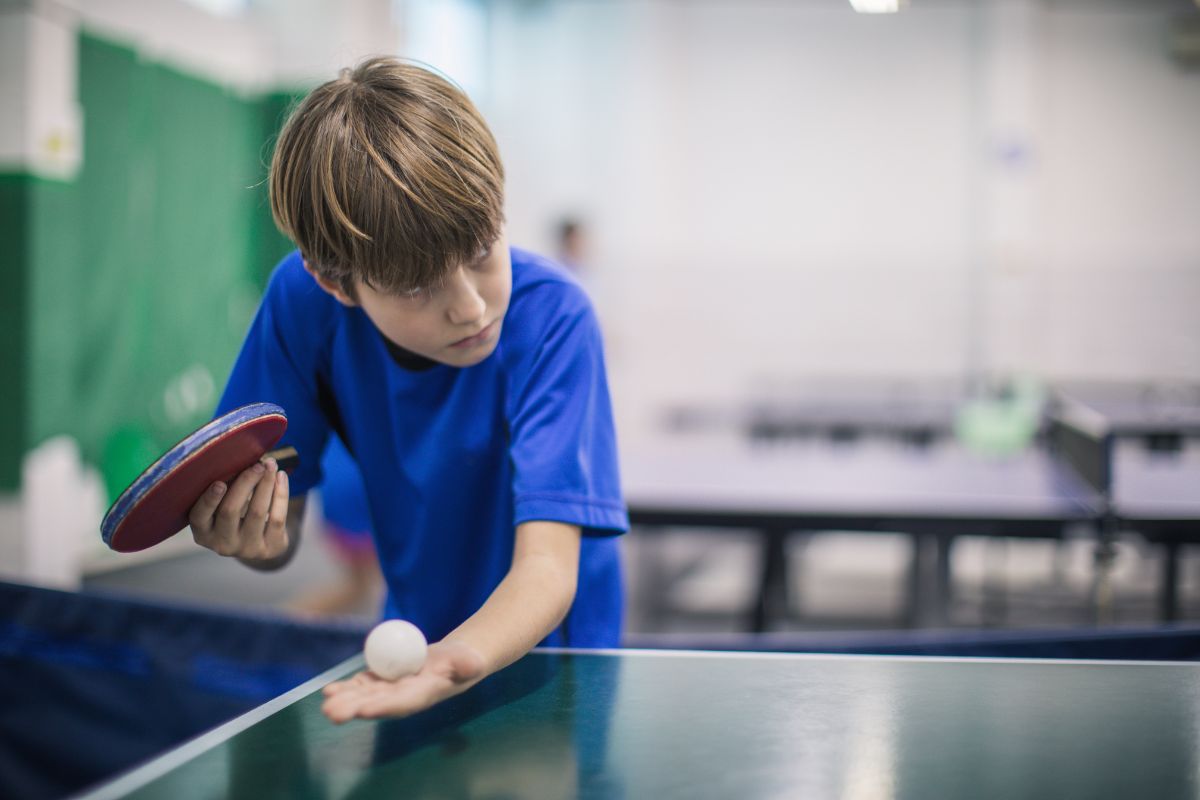
Learn about this Olympic racquet sport and how you can play table tennis in Sydney
Table tennis, often affectionately called ping pong, is a fast-paced and exhilarating sport that has captured the hearts of millions worldwide. It offers an electrifying mix of speed, precision, strategy, and camaraderie. In our blog article, we’ll delve into the origins of table tennis, the intricacies of gameplay, the essential equipment, types of shots and techniques, the myriad benefits it offers, and some delightful fun facts.
Origins of Table Tennis
Table tennis has a rich history that traces its roots to various forms of indoor tennis-like games played in England during the late 19th century. These early versions were predominantly informal and featured objects like books for paddles and rounded corks as balls.
The game gained popularity in England and was trademarked as “ping pong” in the early 20th century due to the distinctive sound the ball made during play. However, it was later rebranded as “table tennis” to standardise its identity as a bona fide sport.
The International Table Tennis Federation (ITTF) was founded in 1926, leading to the standardisation of rules, equipment, and dimensions. This paved the way for table tennis to become an official Olympic sport in 1988, further cementing its global recognition and appeal.
How to Play Table Tennis
Table tennis is played on a rectangular table divided into two halves by a net. Here’s a concise overview of how to play the game:
- The Table: A regulation table is 9 feet long, 5 feet wide, and 30 inches high. It’s made of a smooth, low-friction material for consistent play.
- Paddles: Players use paddles (or racquets) to strike the ball. These paddles consist of a blade and two rubber coverings, each featuring different textures.
- The Ball: The table tennis ball is small and lightweight, with a diameter of 40 millimetres. It’s usually made of celluloid or plastic.
- Serving: A player begins the game by serving the ball diagonally across the table, ensuring it bounces on their side and then the opponent’s side. The receiver must then return it, and the rally begins.
- Rally: Players take turns hitting the ball back and forth over the net. The objective is to score points by making the ball land on the opponent’s side of the table.
- Scoring: Points are scored when the opponent fails to return the ball according to the rules. A game typically goes up to 11 points, with a two-point lead required to win.
Table tennis is a fast-paced sport demanding quick reflexes, precise hand-eye coordination, and the ability to use various types of shots effectively.
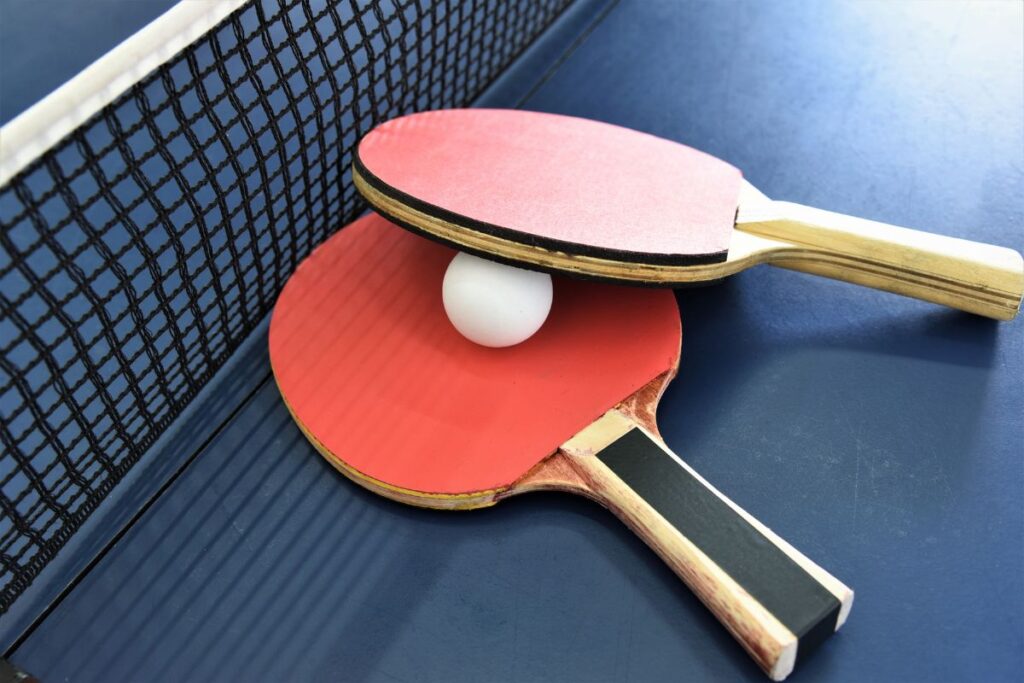
Types of Shots and Techniques
Table tennis boasts a wide array of shots and techniques, allowing players to adapt to various situations and opponents. Here are some of the key ones:
- Forehand Drive: A powerful, offensive shot using the front side of the paddle, executed with a sweeping motion.
- Backhand Drive: Similar to the forehand drive but executed with the backhand side of the paddle.
- Topspin: A shot with topspin, causing the ball to rotate forward, leading to a downward trajectory after crossing the net. It adds speed and depth to the shot.
- Backspin: A shot with backspin, causing the ball to rotate backward and bounce lower when it reaches the opponent’s side. It’s an effective defensive tactic.
- Smash: An aggressive shot executed with a downward, forceful motion. It’s often used to capitalise on high balls.
- Block: A short, controlled shot used to neutralise an opponent’s attack.
- Lob: A defensive shot that sends the ball high and deep into the opponent’s court.
- Chop: A defensive backspin shot executed away from the table.
Each shot requires a combination of footwork, positioning, and paddle angle to master, making table tennis a sport of continuous learning and improvement.
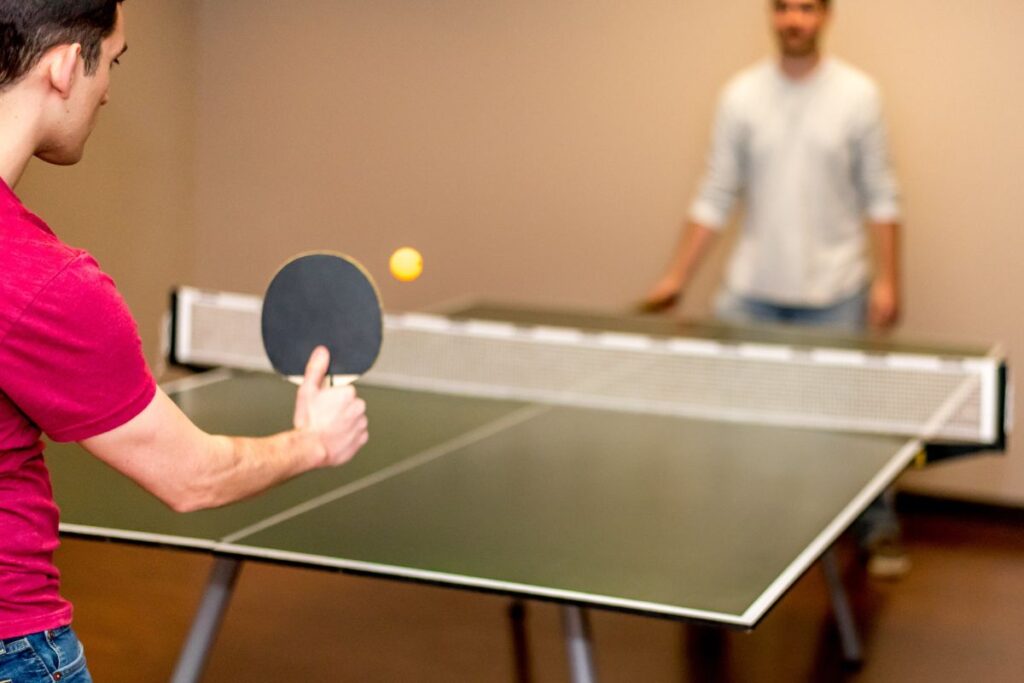
Training and Practice
Drills for Skill Improvement: Explore a range of practice drills designed to enhance your table tennis skills.
Physical Conditioning for Table Tennis: Understand the importance of physical fitness and conditioning for peak performance.
Mental Preparation and Focus: Develop mental resilience and concentration techniques for competitive play.
Competitions and Tournaments
Local Leagues and Clubs: Sydney hosts a variety of table tennis tournaments and competitions throughout the year and clubs can be located on the Table Tennis NSW website.
Regional and National Competitions: Learn about opportunities to participate in regional and national tournaments.
International Table Tennis: Explore the world of professional table tennis and the major international competitions.
Social and Recreational Play
Many table tennis venues in Sydney offer social play sessions where players can drop in for a friendly game. These sessions are great for meeting fellow enthusiasts, making friends, and enjoying the sport in a relaxed setting.
At Voyager Meadowbank you can enjoy playing table tennis in a newly renovated, dedicated room with three tables and option for exclusive function hire. Opening hours are Mon-Sat 7:30am-11pm and Sun 7:30am-10pm.
Tennis World at Chatswood offers casual table hire 7 days per week, between 7am and 10pm. weekdays and 7am until 6pm during weekends.
Other clubs can be located via the TTNSW club finder.
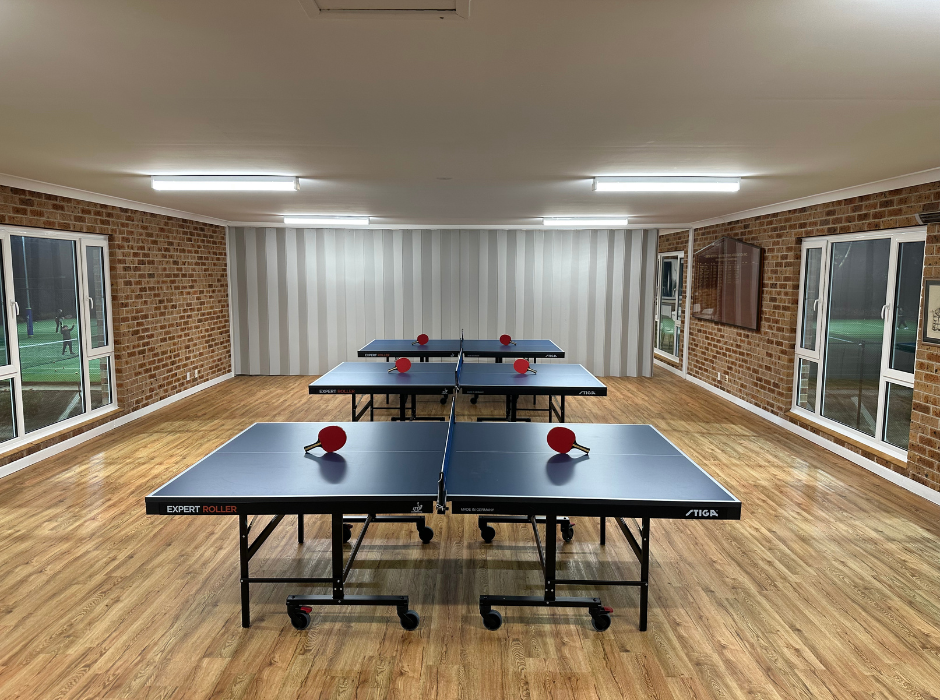
Benefits of Playing Table Tennis
Beyond the sheer enjoyment of playing, table tennis offers a myriad of physical, mental, and social benefits:
- Physical Fitness: Table tennis enhances agility, reflexes, and cardiovascular fitness. It’s a fantastic aerobic exercise that helps with weight management.
- Mental Acuity: The fast-paced nature of the game sharpens cognitive skills, including focus, concentration, and quick decision-making.
- Stress Relief: Engaging in a competitive game of table tennis can reduce stress and improve mental well-being.
- Social Interaction: Table tennis is a social sport that fosters interaction, camaraderie, and sportsmanship among players.
- Inclusivity: People of all ages and physical abilities can enjoy table tennis, making it an inclusive and accessible sport.
- Competitive Opportunities: For those seeking competition, table tennis offers a range of tournaments and leagues at various skill levels.
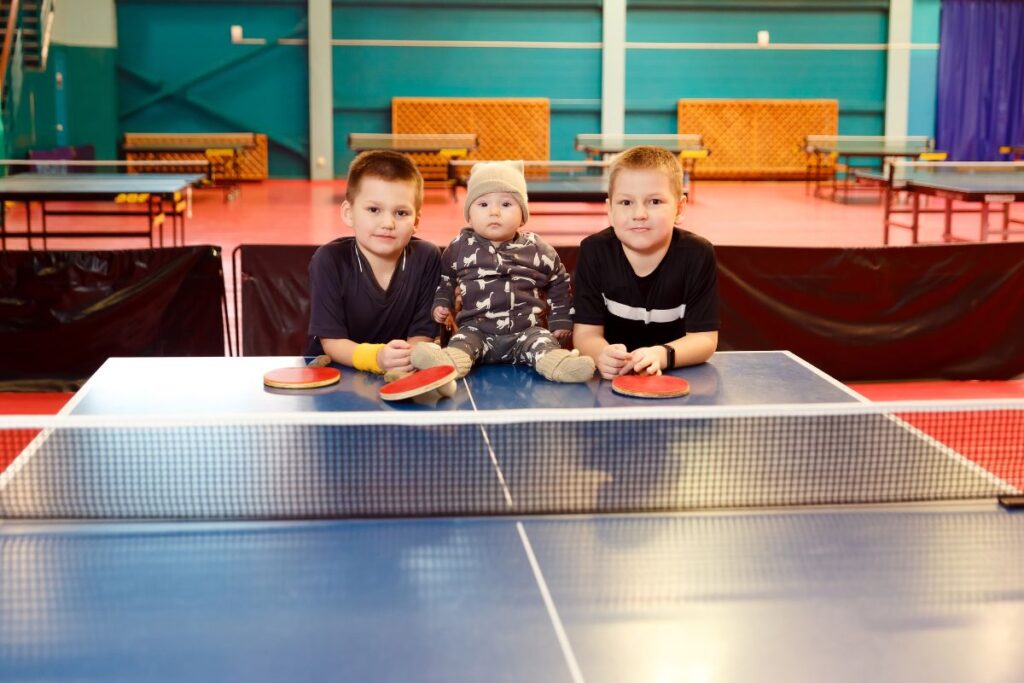
Fun Facts About Table Tennis
- The Fastest Sport: Table tennis holds the record for the fastest ball in any sport, with speeds exceeding 100 miles per hour.
- Olympic Recognition: Table tennis became an official Olympic sport in 1988 and has been a part of the Summer Olympics ever since.
- China Dominance: China is a dominant force in international table tennis, consistently winning numerous Olympic and World Championships medals.
- The Longest Rally: The longest recorded rally in table tennis lasted for 8 hours and 40 minutes, played by two Englishmen in 1978.
- Ping Pong Diplomacy: Table tennis played a role in diplomacy between the United States and China during the 1970s, famously known as “Ping Pong Diplomacy.”
We hope our guide to table tennis will equip you with the knowledge and skills to enjoy this exhilarating sport. Whether you’re a casual player looking for a fun activity or an aspiring pro seeking to reach the pinnacle of the game, table tennis offers endless excitement and opportunities for growth. So, grab your paddle, step up to the table, and let the games begin!
Visit the Voyager Table Tennis page for more information.


